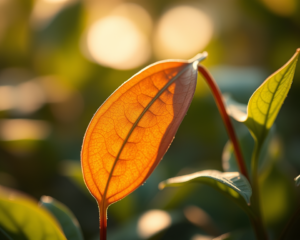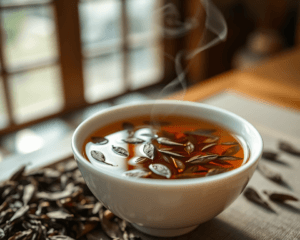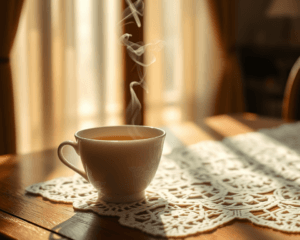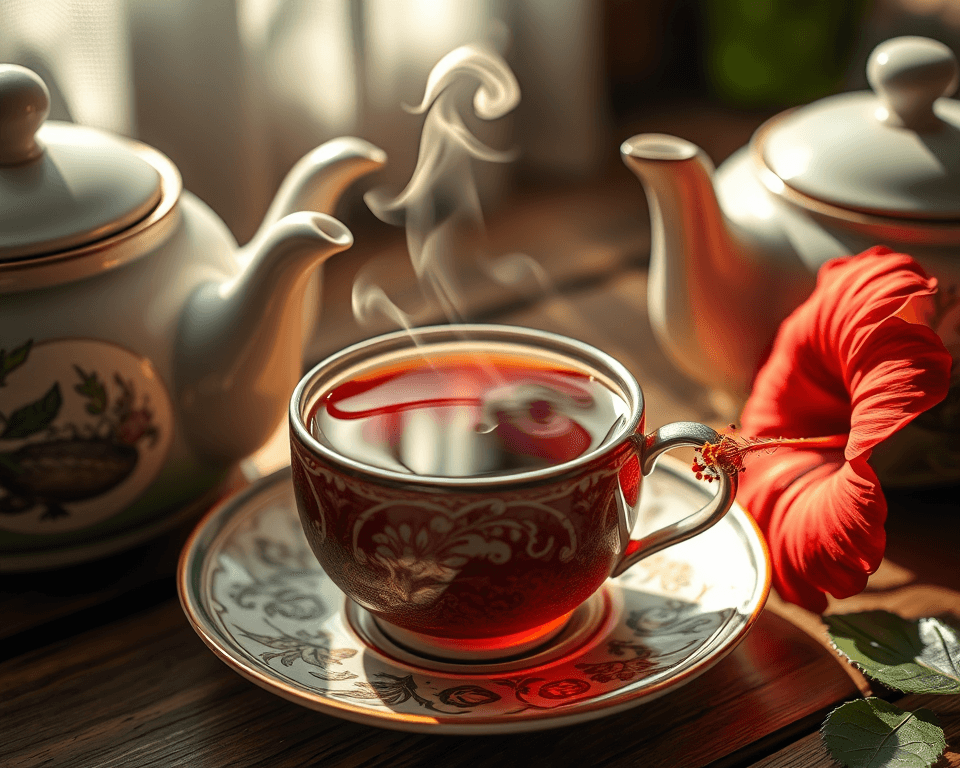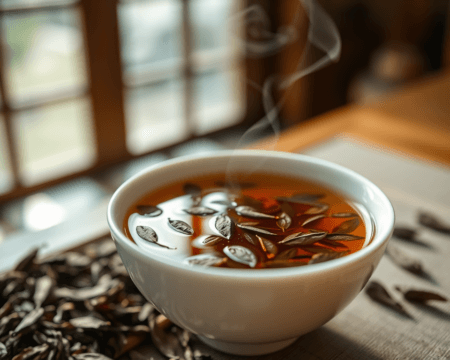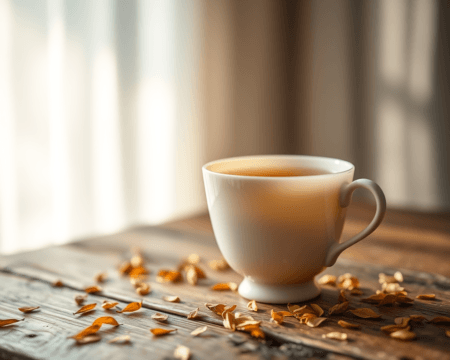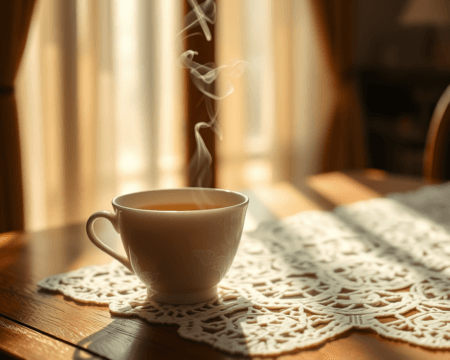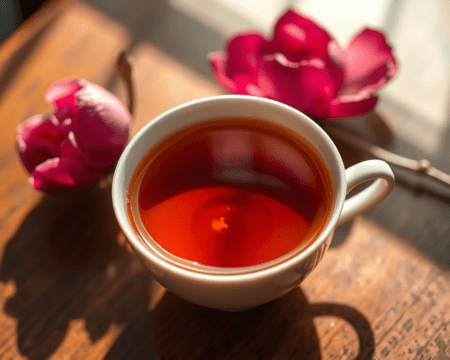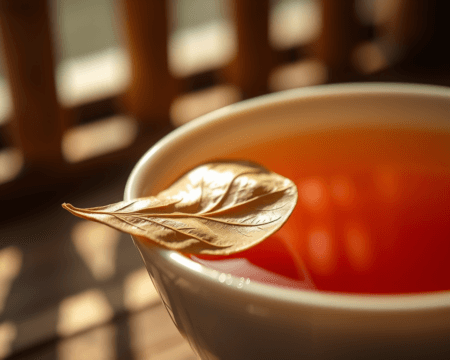Tea—just saying the word conjures images of steaming cups, vibrant rituals, and deep cultural connections. But what if I told you tea’s story is as rich as the flavors it offers? Strap in, because I’m about to take you on a whirlwind journey through time, tracing the origins of tea and its transformation from a basic beverage into a global sensation.
Key Takeaways
- Tea was discovered in ancient China and has a legendary origin tied to Shen Nong.
- It spread across continents, influenced cultures, and evolved through various rituals and ceremonies.
- Different types of tea have distinct origins and cultural significances, shaping the tastes of societies worldwide.
- The impact of tea on trade and economy is profound, influencing social customs and international markets.
The Origins of Tea: A Historical Timeline
The Birth of Tea in Ancient China
Picture this: It’s 2737 B.C. in China, and the legendary Emperor Shen Nong is taking a break from his day of herbal experimentation. Amidst the steam of boiling water, a few leaves from a wild Camellia sinensis plant drift into his pot. Boom! Tea has officially been discovered. This isn’t just a fun story; it’s deeply anchored in Chinese mythology where Shen Nong is a cultural hero hailed for his contributions to herbal medicine.
According to historical records, tea’s first uses were tied closely to ancient rituals reflecting the importance of herbal medicine in daily life. The art of preparing tea quickly evolved from simple herbal infusions to something far more elaborate, showcasing the deep-rooted connection between tea and the fabric of Chinese culture.
The Spread of Tea to Other Regions
As Chinese dynasties rose and fell, tea made its way along trade routes like the famous Silk Road. This wasn’t just a drink; it was a vehicle for cultural exchange. Picture caravans loaded with fragrant tea leaves, traversing mountains and deserts, introducing this elixir to new lands.
In Japan, for instance, tea ceremoniously blended with local customs. The Japanese tea ceremony emerged, a spiritual experience that blends mindfulness with the simple act of drinking tea, showcasing how cultures adapt and elevate food and drink into art forms. Over in Britain, tea rituals evolved into social gatherings—think Victorian tea parties where the elite discussed matters of state over delicate porcelain cups filled with Earl Grey. These rituals weren’t just about the beverage; they were pivotal for cultural identity and social bonding.
Key Figures and Their Influence on Tea
Shen Nong: The Legendary Inventor
Let’s talk Shen Nong. He wasn’t just an emperor; he’s the father of agronomy. This ancient botanist pushed boundaries in understanding plants, and tea became a shining example of his impact. His legendary discovery of medicinal teas opened doors for herbal remedies, cementing tea’s role as a staple in daily health rituals.
But Shen Nong isn’t the only name to remember. Over the centuries, numerous tea masters from various cultures emerged, introducing innovations that shaped how we experience tea today.
Notable Tea Innovators from Various Cultures
From Japanese tea masters who wield their tools like artists crafting masterpieces to British innovators who refined blending techniques, countless figures have made meaningful contributions to the world of tea. The Japanese focus on aesthetics and ceremony contrasts sharply with the British approach, which prioritizes social engagement and flavor diversity.
Take the iconic Matcha, for example—a powdered green tea celebrated in Japanese culture. In the UK, there’s the classic English Breakfast, a strong blend typically enjoyed with milk, showcasing how regional variations reflect personal tastes and customs. Understanding these innovators gives us not just a history lesson but a roadmap of how tea evolved through creativity and innovation.
The Cultural Significance of Tea Across Societies
Tea in Chinese Culture and Philosophy
In China, tea isn’t merely a drink; it’s a symbol of cultural identity. Tea ceremonies embody Confucian values, promoting harmony and respect among participants. As guests sip their tea, they engage in dialogues that reflect deep philosophical teachings, connecting generations through shared rituals and meaning. Every pour and sip carries a history, deepened by the daily rituals that integrate tea into the very essence of Chinese life.
The Role of Tea in European and Asian Cultures
Let’s switch gears to Europe and Asia where tea’s significance takes on fascinating forms. Picture a Victorian tea party—women in elegant dresses discussing the latest gossip over cups of Darjeeling. Tea has played a major role in these social customs, showcasing its ability to foster relationships and create community.
Japan’s tea ceremonies, in contrast, focus on mindfulness—a stark juxtaposition that emphasizes the diversity of social functions tea plays. Here, it’s about zen, aesthetic beauty, and a profound appreciation of the moment.
Both traditions underscore tea’s economic importance as well, with trade pathways established centuries ago laying the groundwork for today’s global tea market.
Types of Tea and Their Unique Origins
Global Varieties of Tea: A Comparative Analysis
Let’s break down the types of tea we encounter every day. Black tea, green tea, oolong tea, and herbal infusions each originate from specific regions and have distinct flavor profiles.
- Black Tea: Bold and robust, commonly found in English Breakfast blends from Assam or Ceylon.
- Green Tea: Light and refreshing, with varieties like Japanese Sencha or Chinese Longjing, cherished for their health benefits.
- Oolong Tea: A delightful balance between black and green, famous for its floral aroma, hailing mainly from Taiwan.
- Herbal Infusions: Not technically tea but still a flavorful experience, these include everything from chamomile to hibiscus, often linked to various health benefits.
Remember, the flavors you enjoy aren’t just about preference—they’re tied to geography, climate, and culture. The uniqueness of each tea variety adds layers to our experience, whether it’s a soothing cup at night or an energizing mug in the morning.
The Development of Different Brewing Techniques
Now, how do you actually get the most out of these varieties? Brewing methods have evolved significantly. The traditional tools used in different cultures play a vital role in flavor extraction.
- In China, the Yixing teapot, made from clay, is revered for enhancing the tea’s natural flavors after repeated use. Each brew tells a story as it builds character over time.
- In Japan, the Chasen whisk is essential for frothing Matcha, creating that perfect creamy texture.
Modern adaptations bring these techniques into the 21st century. Brews now permeate kitchen gadgets like electric kettles with precise temperature control, crucial for different types of tea to reach their potential.
This evolution reflects a growing appreciation for tea, driven by an ever-curious world looking to refine and enhance our drinking experiences.
The Impact of Tea on Trade and Society
Historic Trade Routes and Their Influence on Tea Distribution
When you peel back the layers, tea’s history is also a fascinating tale of trade. Tea was among the prized commodities traded along maritime routes, influencing economies even then. Picture bustling ports with ships loaded full of tea—this was the lifeblood of international trade.
Maritime trade routes laid the foundation for globalization—surrounding cultures adopting tea as their own, each infusing their practices and flavors into this ancient beverage.
The Economic Significance of Tea in Modern Society
Fast forward to today, and tea has become a massive industry. It’s a multi-billion-dollar market with significant economic contributions. Trade patterns have shifted with consumer trends towards sustainability and organic products. Consider brands like Harney & Sons or Rooibos Co., both of which have become staples in the tea community while focusing on ethical sourcing.
Modern connoisseurs are more than just casual drinkers. They’re passionate about what they sip, pushing brands to align with their values—making tea not just a beverage, but a symbol of lifestyles.
At its core, understanding tea’s roots and evolution gives you a richer appreciation when you take that first sip. It’s not just about taste; it’s about history, culture, and the intricate dance of society coming together over a shared love for this iconic drink. So, next time you brew a cup, remember: you’re not just sipping tea; you’re connecting with centuries of tradition.
Frequently Asked Questions
What are the different types of tea and their origins?
Tea can be broadly categorized into six main types: green, black, white, oolong, herbal, and yellow. Each type has unique processing methods and flavor profiles, originating from various regions like China, India, Japan, and Taiwan, influencing their cultural significance.
How did tea influence global trade?
Tea has played a critical role in global trade, particularly during the 17th and 18th centuries. Its high demand led to major trade routes being established, impacting economies and fostering relationships between countries, such as the British East India Company and China.
What are some traditional tea ceremonies around the world?
Various cultures have unique tea ceremonies, such as the Japanese tea ceremony, which emphasizes aesthetics and mindfulness, and the British afternoon tea, focusing on social gatherings. Each reflects the values and customs of the society it comes from.
How does the preparation of tea differ among cultures?
Tea preparation varies widely by culture. For example, Chinese tea ceremonies focus on the brewing process and the type of tea leaves used, while British tea often involves milk and sugar. Each method highlights the cultural importance of tea in daily life.
What health benefits are associated with drinking tea?
Drinking tea is associated with several health benefits, including antioxidants, improved heart health, and enhanced mental alertness. Different types of tea may have specific benefits; for instance, green tea is linked to weight loss, while herbal teas may aid digestion.
Why is the quality of tea important?
The quality of tea affects its flavor, aroma, and health benefits. Higher quality teas, often sourced from specific regions, tend to have richer flavors and greater antioxidant properties, enhancing the overall tea-drinking experience.
What role did tea play in social customs?
Tea has been central to many social customs, serving as a symbol of hospitality and connection. In various cultures, sharing tea is a ritual that promotes bonding and communication, reflecting its role in community and family gatherings.
How can I select the right tea for myself?
Selecting the right tea depends on personal taste preferences and desired benefits. Consider trying different types—such as herbal for relaxation or black for energy—until you find the flavors and effects that best suit your lifestyle and mood.
Are there any misconceptions about tea?
Common misconceptions include the belief that all tea contains caffeine or that herbal teas are “true” teas. In reality, only Camellia sinensis plants produce true tea (green, black, etc.), while herbal teas are made from herbal infusions and typically do not contain caffeine.
